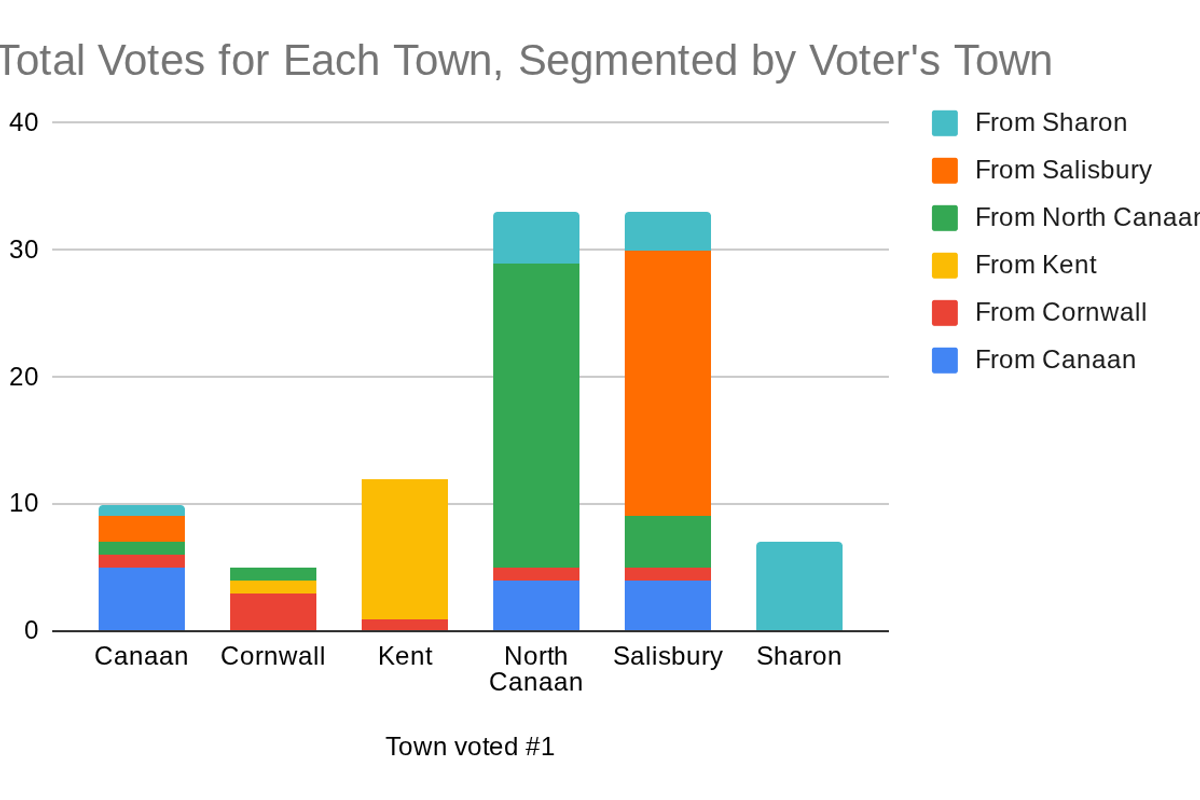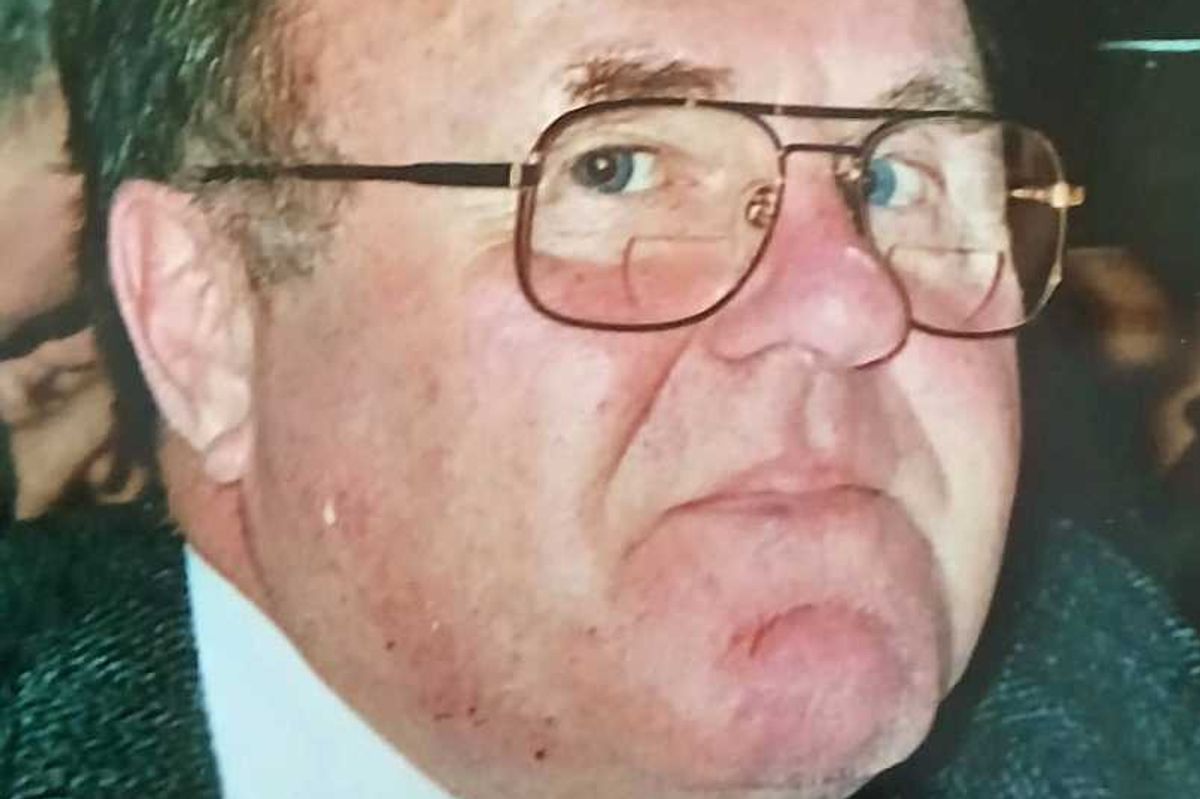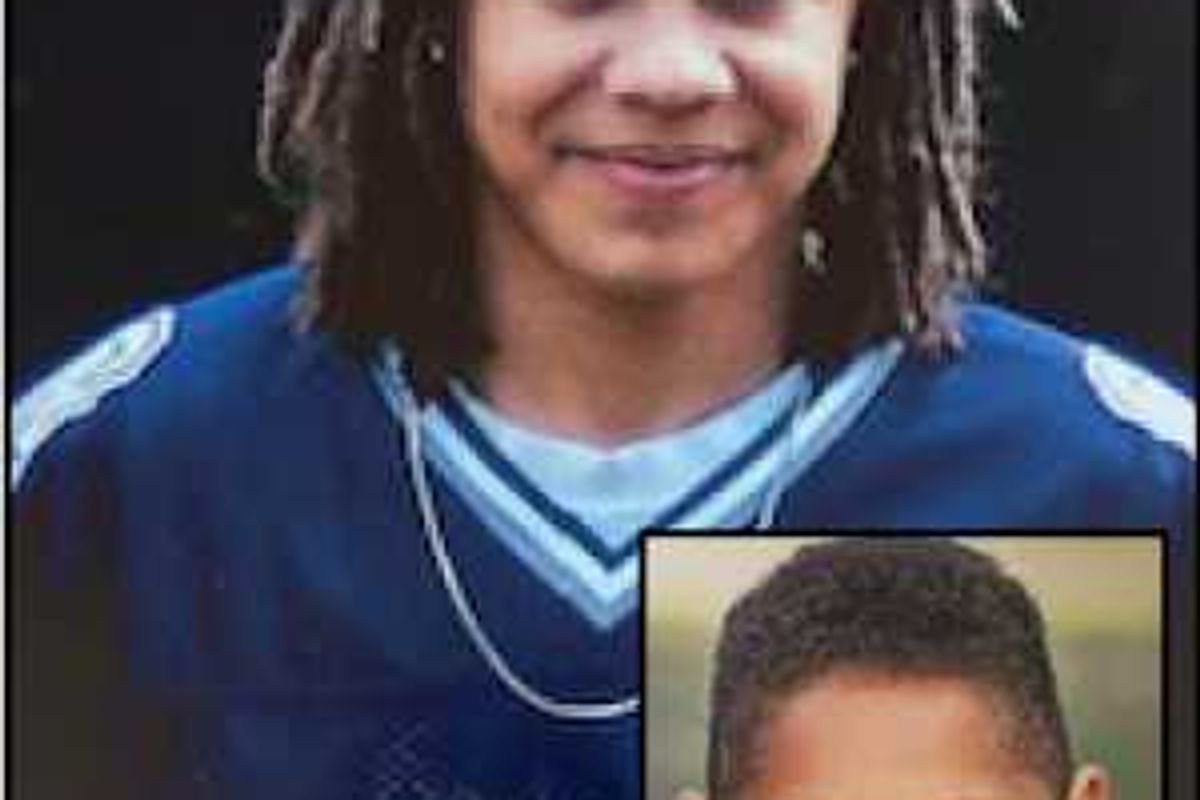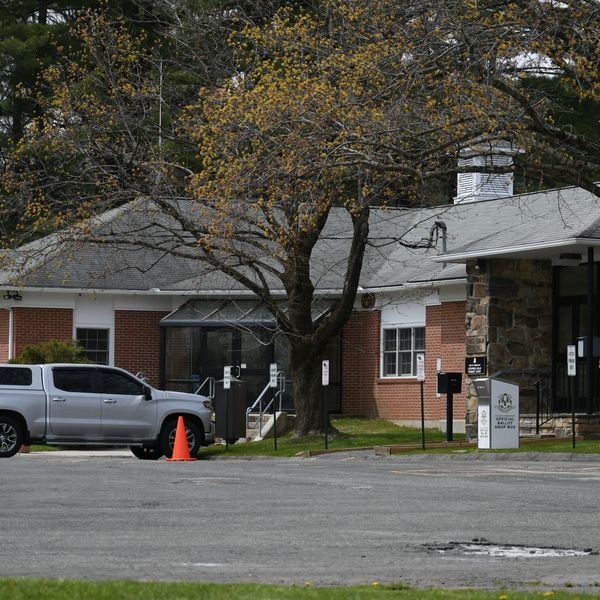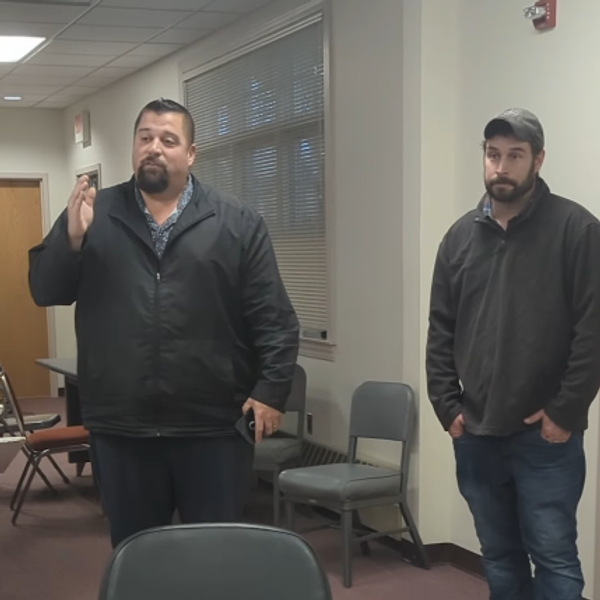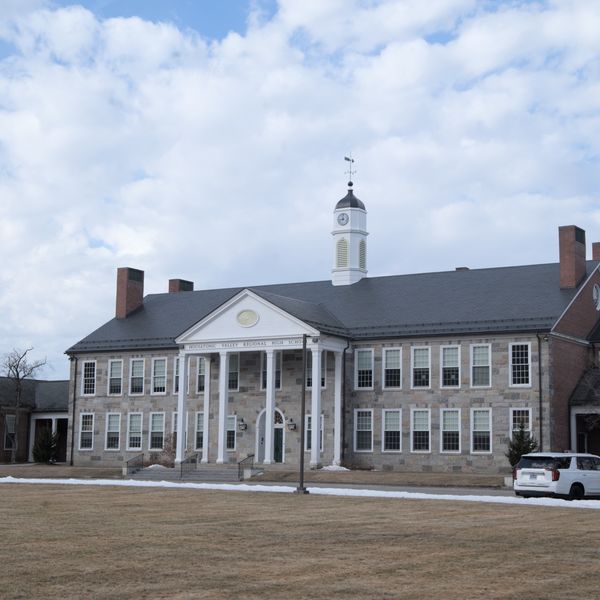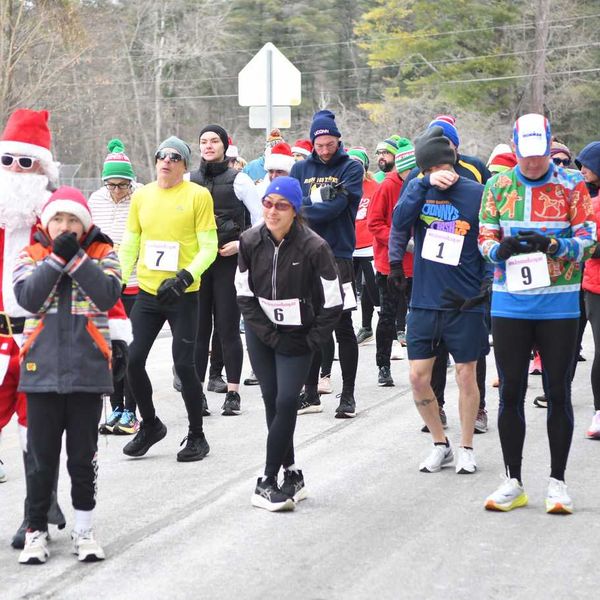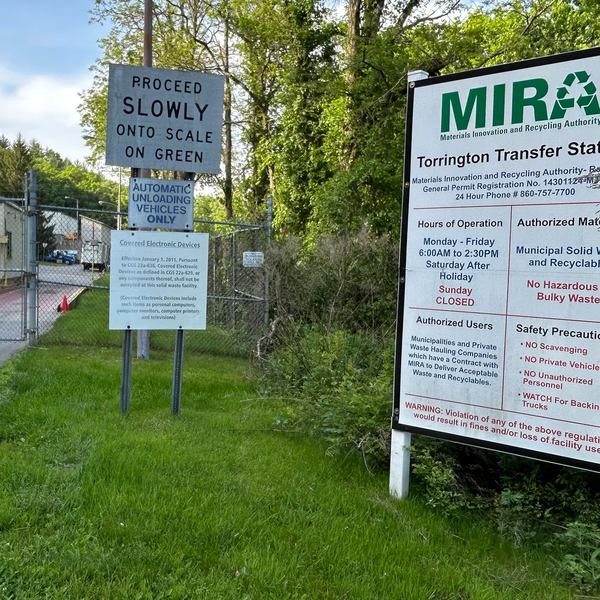Latest News
NHS faculty counsel voted this year to invite Sophomores to apply and be inducted to the National Honor Society.
While NHS inductees at Housatonic were historically limited to juniors, this change is something that’s already common across the country.
The decision came after a unanimous vote by the faculty counsel of the National Honor Society. This is a group of five teachers who are voting members.
Then the decision was handed off to senior student members of the NHS chapter for approval. The decision was posed as a yes or no question on the ballot when students voted for officers in the fall. A majority of seniors voted in favor of allowing sophomores to join the club, so this year’s chosen sophomores will be inducted in June 2026.
“Some people might be upset because it has been Juniors for so long, so they might not think that the Sophomores should be able to join, but it is a good opportunity for everyone so there is honestly no harm in it,” NHS member and HVRHS senior Maddy Johnson said.
Although this is new for HVRHS, faculty advisor Peter Vermilyea said that’s not the case nationwide. “That’s pretty typical across the country for students to be inducted as Sophomores,” Vermilyea said. “So, I was inducted as a Sophomore to the National Honor Society, and my two sons were inducted as Sophomores.”
This would create a bigger NHS group which will allow a bigger pool for different volunteering, leadership and service opportunities. “Our members are pulled in so many directions, they are class officers, they are captains of sports teams, they have lots of different responsibilities,” Vermilyea said. Having a bigger group will ease the burden for after school volunteer opportunities, like graduation, parent night, service projects.
“The thing that really excites me about this is the problems that we have now in the National Honor Society is that there is no continuity of membership,” Vermilyea said. “So, when our current seniors were inducted on June 4 last year, we left school eight days later, and we came in completely cold next year. Nobody knows what’s expected of them, nobody has had the opportunity to gain any leadership opportunity to become officers.”
“I’m not sure that there is a downside, I never see a downside in recognizing worthy students,” Vermilyea said. The only possible challenge that he acknowledged is that it may be more difficult for them to qualify. Being younger, sophomores have less time than juniors to cultivate leadership experience and community service.
NHS member Hannah Johnson explained her perspective. “It will be good to expand our program but will make the ceremony longer and make it a less special achievement at HVRHS,” Johnson said.
Keep ReadingShow less
Graphic by Peter Austin
The HVRHS Today sent an anonymous survey to HVRHS students asking them to rank each of the six towns in Region One — Falls Village (Canaan), Cornwall, Kent, North Canaan, Salisbury and Sharon — from best to worst. Over 120 students responded, and the results show some interesting trends.
Taking an initial look at the data, North Canaan barely leads Salisbury in the race for first place, the apparent favorites among students. Falls Village takes a close third over Kent, with Sharon in fifth and Cornwall sits comfortably sixth.
And if the story ended here, this conclusion might be the one the readers take home: according to the students of HVRHS, the towns from best to worst are North Canaan, Salisbury, Falls Village, Kent, Sharon and Cornwall. However, this conclusion doesn’t account for a bias in the data.
Making up over half of responses, students from North Canaan and Salisbury represent 35, or about 30%, and 27, or about 24%, of the votes respectively. Sharon, Falls Village and Kent each make up between 14 and 15 votes respectively, or about 12.5% of the votes each. Only 11 students from Cornwall responded, leaving them to make up the last 9% of responses to the survey.
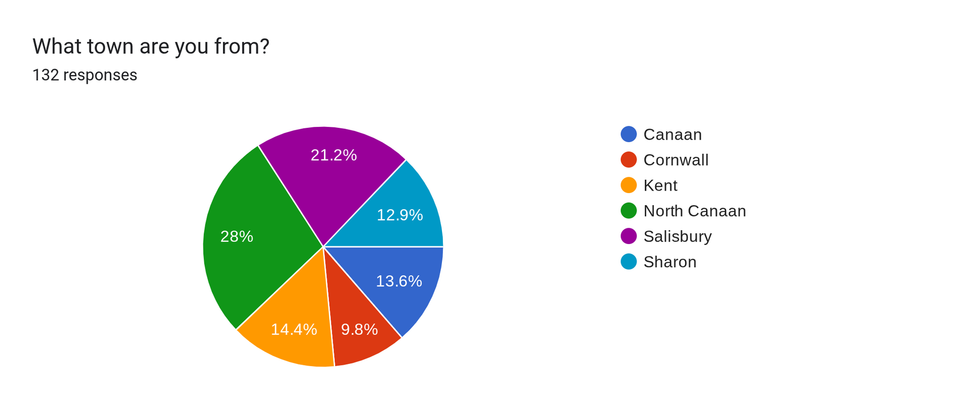
To see if responders really do exhibit loyalty to their town of origin, we can see what percent of responders ranked their town as their top choice. The data reveals there is often clear loyalty to one’s own town, particularly in Kent and Salisbury where over 90% of responders ranked their town first.
Once this factor is taken into account, it becomes clear how North Canaan and Salisbury managed such a hefty lead, while Cornwall and Sharon fell far to the bottom of most students’ rankings.
One way to see the full picture would be to break down what town each of the votes came from.
Attempting to figure out which town is the best comes down to the fight between Salisbury and North Canaan. While they received almost the same number of votes, Salisbury received many more votes from people outside of Salisbury than North Canaan did. Salisbury also received more second place and the same number of third place votes, while receiving fewer fourth, fifth and sixth place votes than North Canaan.
But drawing any definitive conclusions is more complicated than it may seem at first glance. This leads to a more important idea, that data isn’t always as simple as it seems.
Keep ReadingShow less
William Paul Corcoran
Dec 17, 2025
LAKEVILLE — Paul passed away on Dec. 7, 2025, surrounded by his loving family.
Paul was born on Aug. 24, 1940, to the late Gray and Gladys Vandyke.Paul spent most of his life in Lakeville.At an early age, he worked at Community Service in Lakeville along with his father. He then became the lumber yard manager.After leaving the Community Service, he worked as a custodian at Salisbury Central School.
He was predeceased by his four brothers, Tom, Jim, Jerry, and Peter.
Survivors are the love of his life, his wife Norma of 34 years, his two stepsons, Glen and Michael Surdam, his grandchildren, Ben, Franchesca, Glynn, Sierra, and Sidney.
Paul’s wishes were to be cremated and have no service.
Keep ReadingShow less
Jai Nathan Thomas Marshall
Dec 17, 2025
SHARON — Jai Nathan Thomas Marshall, 31, originally from Sharon, Connecticut, passed away unexpectedly on Dec. 4, 2025.
Born in Torrington, on April 4, 1994, he leaves behind his adoptive parents, Tom and Linda Marshall, a daughter, Mylieonah Jai Lynae Marshall, four sisters, Chauntine Donovan, Quinlin Marshall, Salirae “Ping” Marshall and Celie Besmer; two nieces, Zendaya Marshall and Inara Donovan and many cousins.
Jai also leaves behind his mom, Kathleen V. Ambery, his uncle, Noel F. Ambery ll and was predeceased by his grandparents, Noel “Frank” Ambery Sr. and Marie (nee) Barrow of Falls Village.
As a boy, Jai traveled across the world with his family and touched many lives. He had a wonderful sense of humor and a kind and gentle spirit. He gave us many years of joy until mental illness struck him in his prime. Jai loved his family and will be forever in our hearts. Rest in peace, our beautiful soul. To honor his memory, please say a prayer for all those who suffer endlessly and are misunderstood in our society. A private gathering will be held to celebrate Jai.
Keep ReadingShow less
loading

